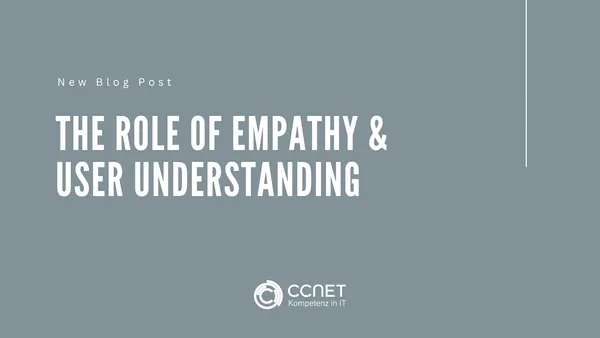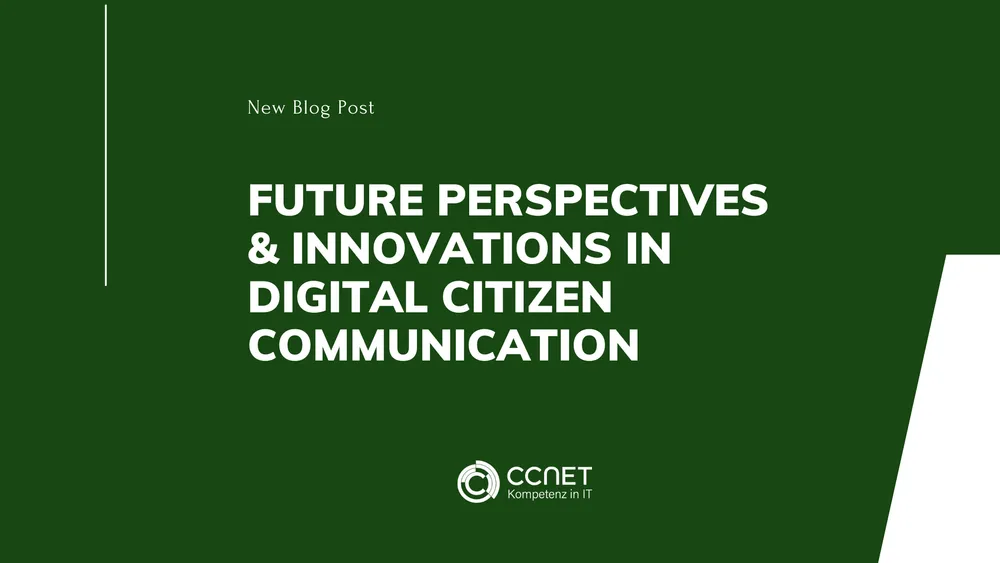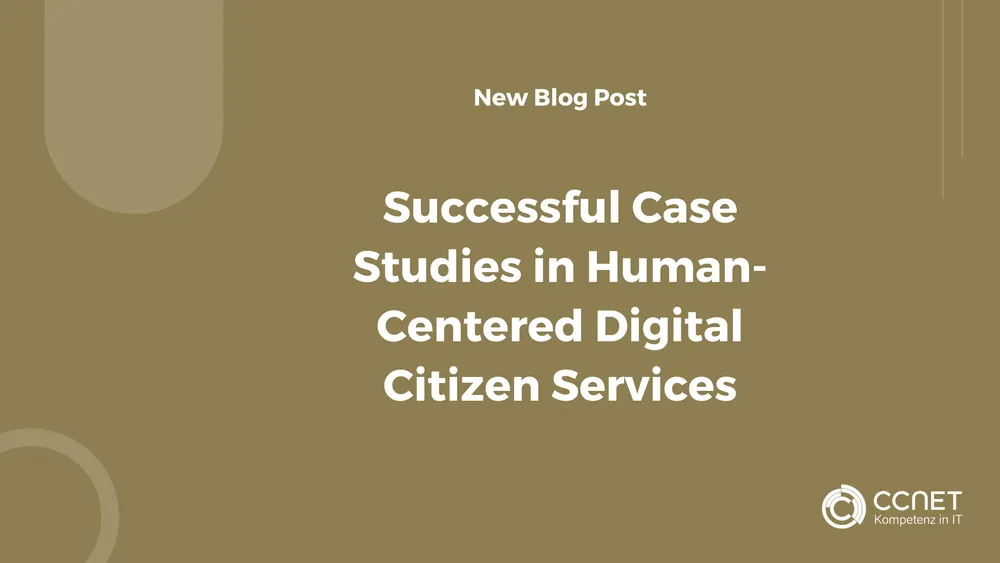
CCNet
Jun 5, 2024 • 3 min read

The Role of Empathy and User Understanding
In the first part of this series, we explored the fundamentals of Human-Centered Design (HCD) and its importance in creating digital services that are both accessible and user-friendly. Now, in the second part, we delve into the significance of empathy and deep user understanding in the design process. Empathy lies at the heart of HCD, allowing designers to create digital communication and citizen services that truly resonate with their intended audiences.
Further information can be found here: solutions
What is Empathy in Design?
Empathy is the ability to understand and share the feelings of others. In the context of HCD, it involves placing oneself in the user's shoes to gain a genuine understanding of their experiences, emotions, and needs. Empathy goes beyond mere data collection; it requires designers to connect with users on a personal level, leading to insights that drive meaningful design choices.
Why Empathy Matters in Human-Centered Design
Empathy is a critical component of HCD because it fosters a deep connection with users, allowing designers to create solutions that genuinely address their pain points. When designers empathize with users, they can better understand the context in which digital services are used, leading to improved usability, accessibility, and overall satisfaction.
In public services, empathy is especially crucial. These services cater to a diverse audience, including people with varying abilities, cultural backgrounds, and levels of digital literacy. Without empathy, designers risk creating services that fail to meet the needs of these diverse user groups.
Methods for Gaining Deep User Insights
Empathy and user understanding can be achieved through various methods, each providing unique insights into the needs and preferences of users:
-
Ethnographic Studies: This approach involves observing users in their natural environment. By immersing themselves in users' daily routines, designers can identify hidden pain points and understand how users interact with existing digital services.
-
User Interviews: Conducting in-depth interviews with users allows designers to explore their experiences, motivations, and challenges. These conversations can reveal valuable insights that inform the design process.
-
Persona Creation: Personas are fictional representations of user groups. They are based on real user data and help designers consider different perspectives when developing digital services. Creating detailed personas enables designers to design for a broader range of users.
-
Customer Journey Mapping: This method involves mapping out the entire user journey, from initial interaction with a service to the final outcome. By visualizing this journey, designers can identify critical touchpoints where users may encounter difficulties or experience positive moments.
-
Co-Creation and Workshops: Engaging users in co-creation sessions or workshops encourages active participation in the design process. These collaborative sessions allow users to share their ideas, leading to solutions that align with their needs.
Empathy in Action: Digital Services and Citizen Communication
Empathy-driven design leads to digital services that are more intuitive, accessible, and user-friendly. When designers approach the creation of public services with empathy, they can anticipate and address common user challenges. Here are some examples of how empathy shapes the design of digital communication and citizen services:
-
Accessibility for All: Empathy-driven design ensures that digital services are accessible to everyone, including people with disabilities. This may involve incorporating screen readers, providing text alternatives for images, and using clear and simple language.
-
User-Centric Navigation: By understanding how users navigate digital services, designers can create intuitive user interfaces. This includes minimizing complexity, providing clear instructions, and allowing users to accomplish their goals with minimal effort.
-
Iterative Design and User Feedback: Empathy encourages designers to seek user feedback and iterate on their designs. This iterative process allows designers to refine digital services based on real user experiences, leading to continuous improvement.
Conclusion
Empathy is the cornerstone of Human-Centered Design. By understanding users' needs, emotions, and challenges, designers can create digital communication and citizen services that truly resonate with their audience. In the context of public services, empathy-driven design fosters inclusivity, accessibility, and user satisfaction. As we continue exploring the role of HCD in this series, remember that empathy is the guiding force that transforms digital services into meaningful and impactful tools for citizens.


